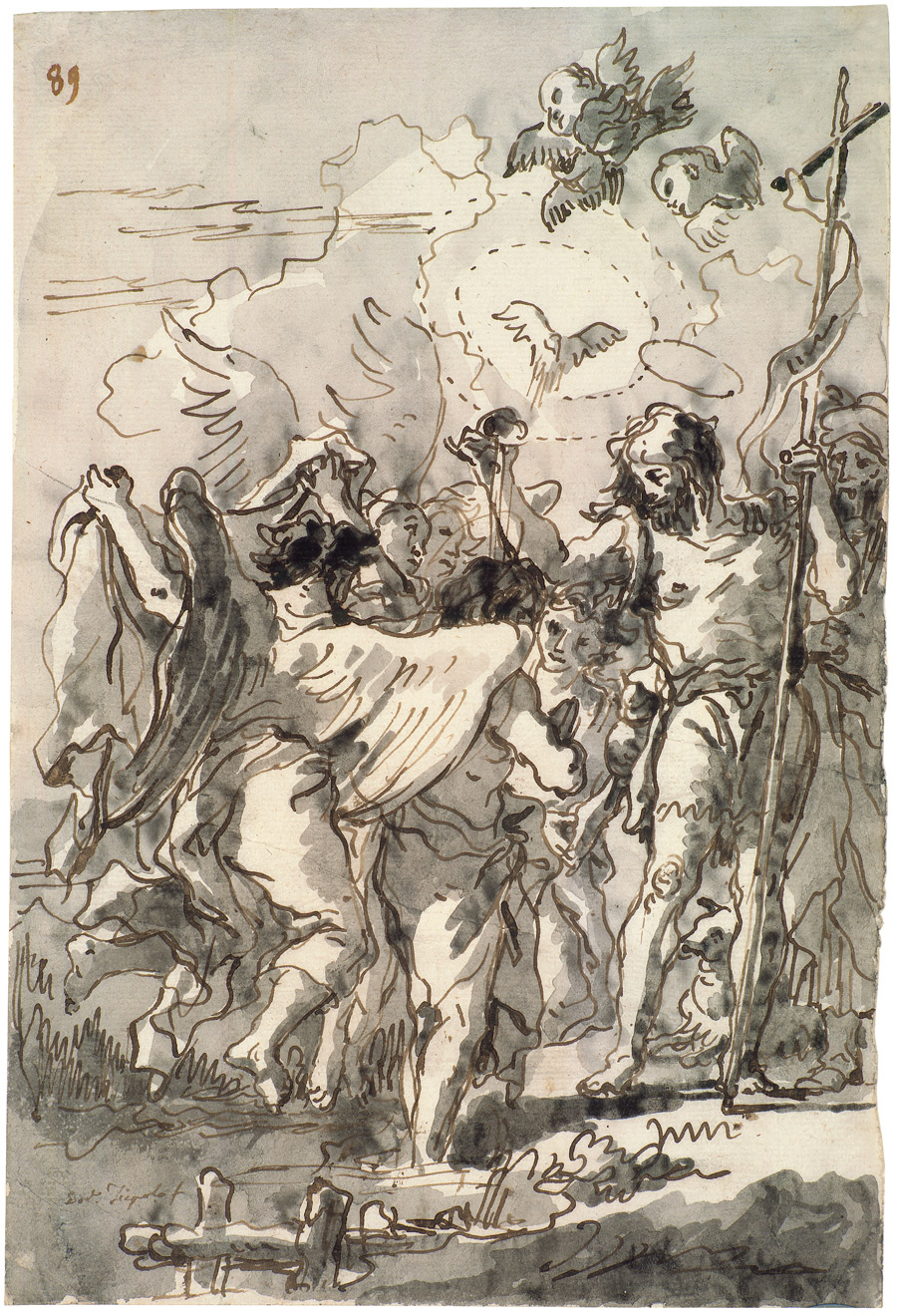Loading the page ...
Giovanni Domenico Tiepolo
(1727–1804, Venice)
The Baptism of Christ. Pen and brown ink over graphite, gray wash. 28.3 x 19.3 cm. Numbered at top left: 89, signed bottom left: Dom. Tiepolo f.
This very spontaneously executed drawing belongs to a large group of preliminary studies for the subject of the Baptism of Christ. Thirteen of these sketches are to be found in the Graphische Sammlung of the Staatsgalerie Stuttgart. This group of studies originally belonged to the Bossi collection, which was acquired from an extensive trove of Tiepolo drawings auctioned by H. G. Gutekunst on 27 March 1882 in Stuttgart. A dozen other studies, including this one, were in the Earl of Beauchamp’s album that was auctioned at Christie’s in London in 1965 (Drawings by G. D. Tiepolo. The Property of the Rt. Hon. The Earl of Beauchamp, Christie’s London, 15 June 1965, no. 16). Other sheets with the same subject can also be found in the collections of the Metropolitan Museum of Art in New York (fig. 1), in the Museo Civico in Bassano, as well as in the Ashmolean Museum in Oxford. They all have approximately the same size, often bear a signature and partly show the original numbering in the top left corner (see Exhibit. Cat. Von Tizian bis Tiepolo, ed. by Julia Schewski-Bock, Städel Museum, Frankfurt a. M. 2006–2007, p. 241–242, no. 82).
During much of his career Giandomenico assisted his father in the execution of monumental fresco cycles. At the same time he was, like Giovanni Battista, a tireless draughtsman and a virtuoso of the Venetian Settecento in this genre. Giandomenico’s impetuous and positively inexhaustible inventiveness drove him to make drawings of certain subjects, which aroused his particular interest, in long series of studies. They are, so to speak, artistic five-finger exercises in which the artist treats the same subject in ever new variations, thereby producing surprisingly diverse ideas for his paintings with no apparent effort. Although a drawing such as this would be committed to paper within a short space of time, the complex group of figures carries conviction in terms of composition and spatial arrangement, while the airy, wonderfully accurate wash creates a maximum of light and atmosphere. George Knox dates the group of studies for the Baptism of Christ circa 1770, while James Byam Shaw has suggested a date between 1770 and 1790.
